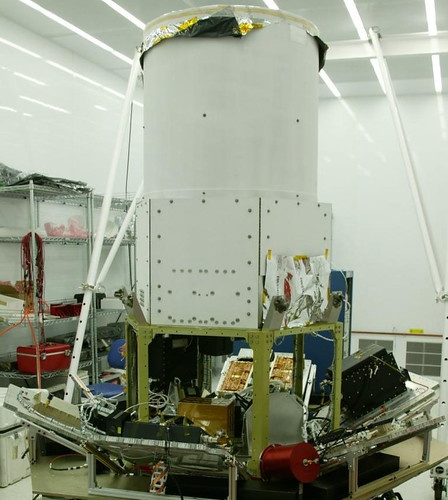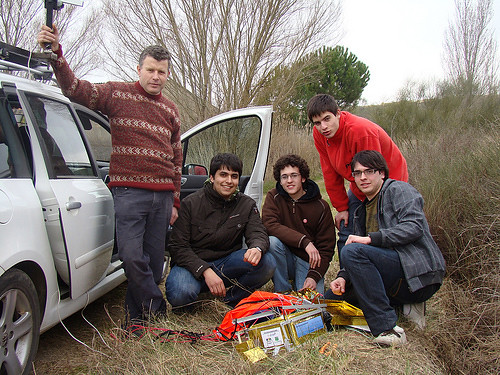The week’s news round-up, courtesy of Bill McDonald:
China announces it will replace Nigerian satellite that failed after 1 year of operation free of charge; all three communications satellites it has sold to Nigeria, Venezuela, and Pakistan have military capabilities which are of concern to the U.S.
[UPI – 04/09/2009]
FCC announces it has begun developing a national broadband plan to ensure that every U.S. citizen has access to broadband services.
[TMCnet – 04/09/2009]
European Space Ageny’s spaceborne X-ray observatory, XMM-Newton, carries out exclusive observation of galaxy Messier 82 for the ‘100 Hours of Astronomy" cornerstone project for the international Year of Astronomy 2009.
[SatNews – 04/09/2009]
GE Asset Intelligence and ORBCOMM subsidiary Stellar Satellite Communications enter into several agreements for ORBCOMM to be sole provider of telematics and M2M data communications on all subscriber communications, whether satellites, cellular, or dual mode.
[SatNews – 04/09/2009]
ND SatCom wins frame contract from African VSAT service provider Q-Kon for SkyWAN VSAT units.
[Satellite Today – 04/09/2009]
Eutelsat to launch French Digital Terrestrial Television platform with majority cof channels on Eutelsat’s Atlantic Bird 3 satellite.
[Satellite Today – 04/09/2009]
Thales Alenia space plant and employees in L’Aquila, Italy, affected by earthquake.
[SatNews – 04/08/2009]
The second Ariane 5 launch of 2009, to carry Herschel and Planck into orbit, now set for May 6.
[SatNews – 04/08/2009]
Among defense budget cuts recommended by Robert Gates is termination of the Air Force’s TSAT (Transformational Satellite) program.
[Satellite Today – 04/08/2009]
MacDonald, Dettwiler and Associates to be sole supplier of direct downlink solutions for RapidEye’s international ground station customers.
[SatNews – 04/08/2009]
Satellite image shows North Korean rocket launch – while scientists in South Korea and the U.S. said the launch had vailed, North Korean state media insisted it had successfully placed a communications satellite into orbit.
[The Lede -NY Times blog – 04/08/2009]
Air Forces second Wideband Global Satellite Communications WGS-2 satellite successfully launched into orbit from Cape Canaveral April 3.
[Schriever AFB News – 04/07/2009]
ILS launches W2A satellite for Eutelsat aboard Proton Breeze-M rocket.
[Satellite Today – 04/07/2009]
iDirect Series 15000 Universal Satellite Hub to be used by CET Teleport GmbH of Germany to launch a pan-African DVB-S2/ACM satellite network using newly available Ku-band capacity on Telstar’s T11N satellite.
[SatNews – 04/07/2009]
U.S. Army orders additional Comms-on-the-move MobiLink systems from DataPath to support operations in Iraq.
[PR Newswire – 04/07/2009]
Thuraya launches mobile satellite services in Korea.
[Satellite Today – 04/07/2009]
Comtech EF Data receives $2.2m order from mobile operator in South America for equipment to expand cellular backhaul network.
[SatNews – 04/07/2009]
Students at San Jose State build an "answering machine in space," a cubesat communications satellite called "ReadySat Go" about the size of a small Kleenex box which will record messages sent to it in space which can be later sent back to Earth in another location.
[Fox News – 04/07/2009]
C2C, an independent Dutch telecom provider to European markets, uplinks to Telstar 11N satellite.
[Satellite today – 04/07/2009]
Satlynx purchases "significant volume" of capacity on Arabsat-5A satellite for coverage of entire African and Middle Eastern regions.
[Satellite Today – 04/07/2009]
Sea Launch plans launch of Italian satellite for Italy’s armed forces and NATO on April 19 from equatorial Pacific.
[Seattle PI – 04/06/2009]
Satellite-cellular mobile platform based on Infineon’s software-defined-radio (SDR) to be used in next-generation integrated satellite-terrestrial communications networks by SkyTerra and TerreStar.
[RF Globalnet – 04/06/2009]
Squire Tech Solutions introduces 300 Power Communications Trailer, a self contained site power, lighting, tower, and communications mobile infrastructure including auto-acquire VSAT, for the emergency response community.
[GlobeNewswire – 04/06/2009]
Stratos to feature media deployment of BGAN (broadband Global Area Network) service at NAB. The Inmarsat service uses portable, lightweight terminals to provide simultaneous video, high speed data, and voice anywhere in the world, and is ideally suited to disaster recovery situations.
[PRNewswire – 04/06/2009]
Broadband Satellite Services grew solidly in 2008 following strong 2007, yet world economic conditions concern most players. Market expected to escape unscathed if economic recover begins in 2009 or early 2010.
[NSR Report – April 2009]
WBMSAT PS – Satellite Communications Consulting Services









